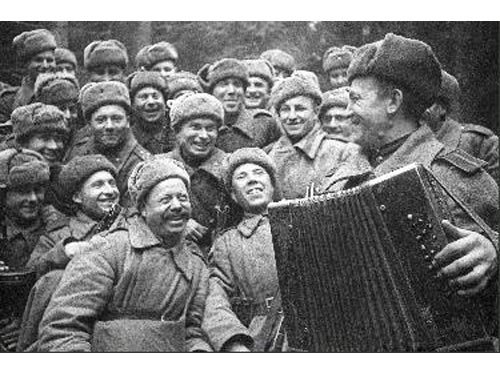"War and Finance." The 1941 catastrophe. Reduction of food allowances for the Red Army4

Its essence is: Cutting the content of peacetime and introducing the standards of nutrition into the Red Army in four categories. "As before, bread, cereals and pasta, potatoes and vegetables, meat and fish are the basis of the allowance. Tea, sugar, salt, seasonings and spices (tomato paste, pepper, bay leaf, vinegar, mustard). Additionally, individual categories of servicemen received butter, eggs and dairy products, canned goods, biscuits and fruits. The norms of the daily allowance of the Red Army men and the commanding staff of the fighting units of the active army included 800 g of rye bread (in the cold season, from October to March - 900 g), 500 g of potatoes, 320 g of other vegetables (fresh or sauerkraut, carrots, beets, onion, greens), 170 grams of cereals and pasta, 150 grams of meat, 100 grams of fish, 50 grams of fat (30 grams of fodder and bacon, 20 g of vegetable oil), 35 g of sugar. Smoked servicemen were supposed to daily 20 g of makhorka, monthly - 7 smoking books as paper and three boxes of matches. Compared with pre-war norms, only wheat bread, replaced with rye bread, disappeared from the main diet. T. 13 (2 - 2). M. 1997, p. 95 - 102.
"Norms of nutrition of other categories of servicemen were reduced. In the rear of the active army, Red Army men and commanders began to receive less for 100 grams of bread, 30 grams of cereals and pasta, 30 grams of meat, 20 grams of fish, 5 grams of fats, and 10 grams of sugar.
The average and higher commanding staff was additionally allocated 40 g butter or lard, 20 g cookies, 50 grams of canned fish, 25 cigarettes or 25 grams of tobacco per day and 10 boxes of matches per month. Taking into account climatic and weather conditions, in the troops of the first line of the Karelian Front, from December to February, an additional 25 g of lard was given, and in the areas that are not well-suited for sciotic diseases, one dose of vitamin C. If it was impossible to organize food for the troops with hot food, dry rations. The increased ration with mandatory hot breakfast relied on the air force technical staff of the Air Force, which was also divided into four categories. The daily allowance for the combat calculations of the crews of the army of the active army increased compared to the pre-war standards-up to 800 grams of bread (400 grams of rye and 400 grams of white bread), 190 grams of cereals and pasta, 500 g of potatoes, 385 g of other vegetables, 390 g of meat and poultry, 90 grams of fish, 80 grams of sugar, and 200 g of fresh and 20 g of condensed milk, 20 g of curd, 10 g of sour cream, 0.5 eggs, 90 g of cream and 5 grams of vegetable oil, 20 grams of cheese, fruit extract and dried fruits for compote). The daily allowance for the technical composition of the Air Force units of the active army, on the contrary, decreased.
The aircraft was also supposed to keep a reserve in case of accidents and forced landings (3 cans of condensed milk, 3 cans of canned meat, 800 g of ice-cream, 300 g of chocolate or 800 g of biscuits, 400 g of sugar per person.) For those who were treated in hospitals and sanatoriums special norms of nutrition "Russian archive, T. 13 (2 - 2) M. 1997, pp. 95 - 102.
to be continued